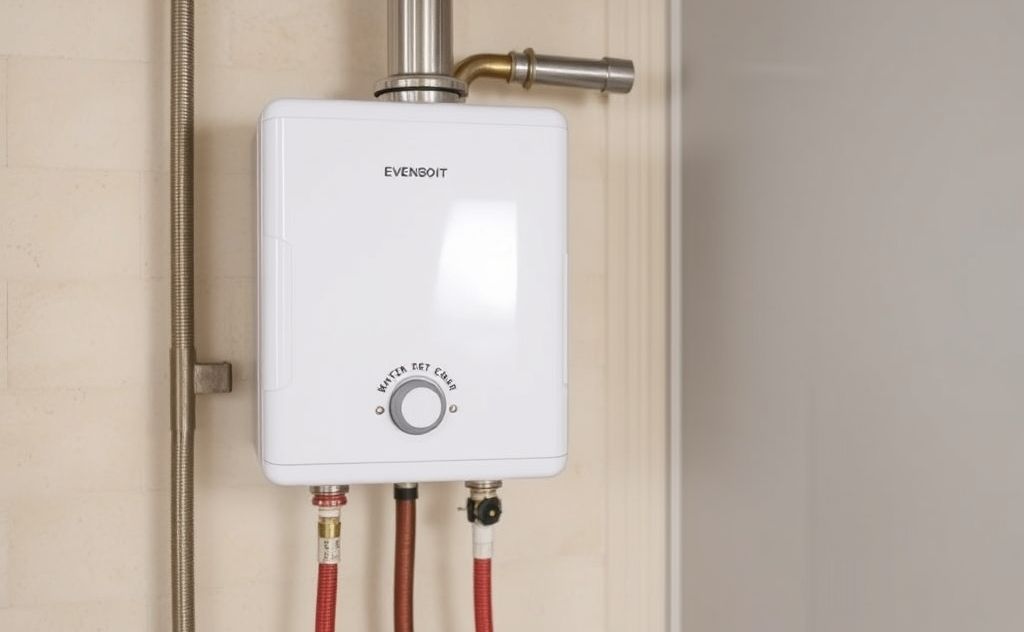A tankless water heater typically requires a minimum water pressure of 30 PSI (pounds per square inch) to function effectively, with optimal performance often occurring between 40-60 PSI.
Tankless water heaters need proper water pressure to function efficiently. Most units require 40-80 psi for optimal performance. Low pressure can cause inconsistent temperatures and reduced flow rates.

Ideal Water Pressure for Tankless Systems
The perfect water pressure range for tankless water heaters is 40-80 psi. This range ensures:
- Consistent hot water delivery
- Proper flow rate through the heat exchanger
- Efficient burner operation
- Longer equipment lifespan
Pressure below 40 psi may trigger error codes or prevent the unit from activating. Some high-end models like tankless units with recirculation pumps can operate at slightly lower pressures.
Minimum Flow Rate Requirements
Tankless heaters need minimum flow rates to activate:
| Heater Type | Minimum Flow Rate |
|---|---|
| Electric | 0.5 GPM |
| Gas | 0.4 GPM |

Causes of Low Pressure in Tankless Systems
Several factors can reduce water pressure in tankless water heaters:
1. Sediment Build-Up
Mineral deposits from hard water can clog the heat exchanger and inlet filter. Regular descaling with proper descalers prevents this issue.
2. Undersized Pipes
Many older homes have 1/2″ pipes that restrict flow. Tankless systems perform better with 3/4″ supply lines.
3. Multiple Simultaneous Uses
Running several fixtures at once divides available pressure. Consider installing a recirculation pump for better performance.
How to Test Your Water Pressure
Follow these steps to check your home’s water pressure:
- Purchase a pressure gauge (available at hardware stores)
- Attach it to an outdoor faucet or washing machine connection
- Turn on the water fully and read the pressure
- Compare results to your heater’s requirements
According to Navien’s specifications, their tankless units require minimum flow rates between 0.5-1.9 GPM depending on model.
Solutions for Low Pressure Issues
1. Install a Pressure Booster Pump
These pumps increase incoming water pressure to meet tankless requirements. They work well in homes with municipal water below 40 psi.
2. Upgrade Plumbing
Replace old 1/2″ pipes with 3/4″ lines to improve flow capacity. This is especially important for homes with multiple bathrooms.
3. Adjust Flow Restrictors
Some showerheads have built-in flow restrictors. Removing or adjusting these can improve performance without wasting water.
Professional vs DIY Fixes
While some pressure issues can be addressed by homeowners, complex problems require professional help:
- DIY: Cleaning filters, checking for kinked pipes
- Professional: Installing booster pumps, repiping, gas line upgrades
As noted in a Houzz forum discussion, many tankless pressure problems stem from flow rate rather than pressure itself.
Maintaining Proper Pressure
Regular maintenance prevents most pressure-related issues:
- Flush the system annually to remove mineral deposits
- Check and clean inlet filters every 3-6 months
- Monitor pressure with a gauge twice yearly
- Inspect for leaks that could reduce pressure
Proper water pressure ensures your tankless heater delivers continuous hot water efficiently. Addressing pressure issues promptly prevents damage and maintains performance.
